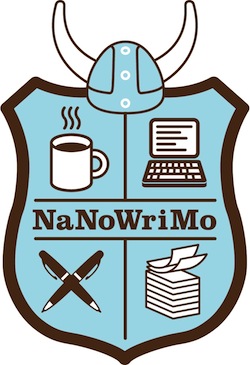On November 1, National Novel Writing Month kicked off its 16th year of wonderful, terrifying, inspirational marathon writing! As a NaNoWriMo participant, you have a month to write 50,000 words—just writing, no editing or backtracking—while you’re cheered on by fellow writers both online and at in-person “write-ins.”
For some, simply hitting 50K is enough. But others take the post-NaNo time to revise their novels—and many NaNo-ers have actually seen their work published. And it’s not just unknowns: In recent years, more and more mainstream authors have revealed that they used the month of November to get started on what would become their bestsellers. What if we told you that a beloved book about fanfiction, a creepy circus story, and a radical retelling of Cinderella all started out as NaNo projects?
Here’s the full list of published NaNovels; we’ve highlighted six success stories here. (Not to be confused with last year’s list, which included several other NaNovels.)
Rainbow Rowell, Fangirl
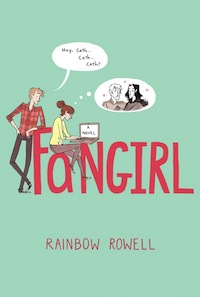 The bestselling author admits that she was “skeptical” of NaNo at first, initially writing it off as something that people who “needed to be tricked into finishing their books” did. This was November 2011, when she had already published two acclaimed novels (though one of them took her five years). At the same time, Rowell couldn’t resist the allure of speeding through the first-draft page and having “a pile of 50,000 words.” So, she gave it a try.
The bestselling author admits that she was “skeptical” of NaNo at first, initially writing it off as something that people who “needed to be tricked into finishing their books” did. This was November 2011, when she had already published two acclaimed novels (though one of them took her five years). At the same time, Rowell couldn’t resist the allure of speeding through the first-draft page and having “a pile of 50,000 words.” So, she gave it a try.
In contrast to her usual writing style of starting each day by rewriting the previous day’s work, Rowell was forced to keep moving forward. However, she found that staying in the world of Fangirl allowed her to keep her momentum, which in turn allowed her to get a better grasp of her characters more quickly:
That 50,000-word pile I made wasn’t a mess at all. It’s some of the bravest writing I’ve ever done, and it includes my all-time favorite character, a guy I think I would’ve second-guessed to death under normal circumstances. NaNoWriMo helped me push past so many of my doubts and insecurities and bad habits. And I think that’s partly why I love Fangirl so much now—because I remember how swept away I felt when I was writing it.
Read Rowell’s entire pep talk.
Hugh Howey, Wool Omnibus
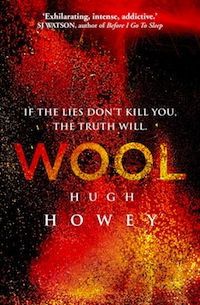 Howey had a novel outline all ready for NaNoWriMo 2011, but right before it kicked off, his self-published novelette Wool suddenly started racking up views and comments. Howey realized that rather than start a new novel from scratch, it would behoove him to play around in this world some more. And NaNoWriMo became the perfect structure within which to write:
Howey had a novel outline all ready for NaNoWriMo 2011, but right before it kicked off, his self-published novelette Wool suddenly started racking up views and comments. Howey realized that rather than start a new novel from scratch, it would behoove him to play around in this world some more. And NaNoWriMo became the perfect structure within which to write:
I can say with confidence that I wouldn’t have written the same books if I’d written them any other way. The compressed nature of a NaNo-novel makes for a tighter plot. It reinforces the importance of not taking a day off. NaNoWriMo isn’t a writing exercise for me. It trained me to be a pro.
Howey’s NaNo schedule might be more daunting than others’: In addition to working a full-time job, taking night classes, and volunteering at his local library’s NaNo Young Writers program, he would get up at 3 a.m. to write. His experience proves that success comes from both getting into that mindset and making the actual, physical commitment.
Erin Morgenstern, The Night Circus
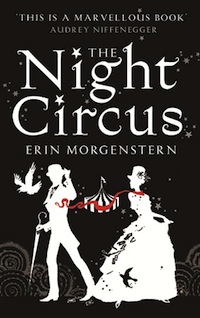 Morgenstern’s novel came about when she followed a wise piece of NaNo wisdom: When in doubt, just add ninjas. During her third NaNo in 2005, she started a project with “no plot but lots of atmosphere”; when she reached 30K and had no idea what to write next, she sent her characters to the circus.
Morgenstern’s novel came about when she followed a wise piece of NaNo wisdom: When in doubt, just add ninjas. During her third NaNo in 2005, she started a project with “no plot but lots of atmosphere”; when she reached 30K and had no idea what to write next, she sent her characters to the circus.
While she had her direction, she still had nothing “novel-shaped.” Morgenstern would spend the next two NaNos adding to her circus story, and NaNo 2008 taking her now 100+K words and forming them into something with an actual plot. She didn’t have a workable draft until 2009. Though Morgenstern has called her NaNo adventures “cheating,” the book went through so many changes over the years that it still counts as a NaNovel.
Alan Averill, The Beautiful Land
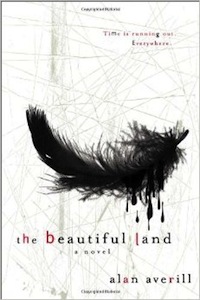 Averill credits NaNoWriMo with forcing The Beautiful Land to keep up with the pace that its summary (a man steals a time machine to save his beloved from the company using his time travel technology to change history) demands:
Averill credits NaNoWriMo with forcing The Beautiful Land to keep up with the pace that its summary (a man steals a time machine to save his beloved from the company using his time travel technology to change history) demands:
The Beautiful Land turned out to be a pretty fast-paced book, and I credit NaNoWriMo for a good deal of that. One of the great things about NaNo is that you don’t have time to think about what you’re doing. You can’t decide to rewrite the first nine chapters because you had this really great idea, or go back and turn your Iowa farmboy into a lesbian bowler from Canada. You’re basically a Writer Shark, and if you don’t keep swimming forward at all times, you’re going to die.
He adds that not all writers have to keep up with the breakneck speed of NaNoWriMo. However, if they’re going to spend years on their novel, the important part is finishing it: “If you can finish the book, then you have a much better framework for editing and rewrites and all that.”
Jason M. Hough, The Darwin Elevator
 Before last year’s NaNoWriMo, Hough—who wrote the first draft of The Darwin Elevator in 2008—shared some tips for NaNo participants, including:
Before last year’s NaNoWriMo, Hough—who wrote the first draft of The Darwin Elevator in 2008—shared some tips for NaNo participants, including:
- Actually write a novel, not 50 1,000-word short stories.
- When you hit the dreaded 25K split, don’t scrap your novel out of despair. Keep going!
- Track your progress every day so you can celebrate every leap forward and redouble your efforts if you fall behind.
- You will have swagger when you’re done. All the swagger.
Marissa Meyer, Cinder, Scarlet, and Cress
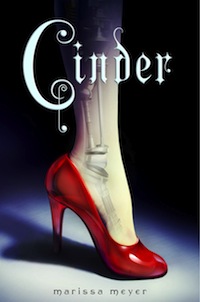
Believe it or not, but the first three novels in Meyer’s The Lunar Chronicles series all started as NaNovels… in the same year, no less! I’ll let Meyer tell the crazy story:
It was 2008 and I had heard about a contest in which the Seattle-area writer who clocked in with the most words during November would win a walk-on role in an upcoming episode of Star Trek. Being both a geek and a chronic overachiever, I knew I had to give it a shot, so I ended up writing the drafts of three novels instead of one. My grand total was 150,011 words. Unfortunately, it wasn’t enough to win the contest (I came in third place!), but at least I finished with three novels that I was really excited about.
Cinder was the heftiest of that bunch, clocking in at 70K. However, Meyer said that she actually scrapped everything she wrote during revisions, which was fine: “I may not produce anything of quality during NaNoWriMo, but I always come away with a great roadmap.” (Read more about The Lunar Chronicles here.)
All of this is not to say that publishing is the be-all, end-all of NaNoWriMo. The true prize is finishing your novel. Another fun part of NaNo is the pep talks from authors; this year’s include Chuck Wendig, Kami Garcia, Brandon Sanderson, Tamora Pierce, and more. Know that you’re not alone in your NaNo adventures, and that many of the books you’ve seen on bookstore shelves started out on November 1 as simply a prompt, an outline, or even just the blank page.
Natalie Zutter writes plays about superheroes and sex robots, articles about celebrity conspiracy theories, and Tumblr rants about fandom. You can find her commenting on pop culture and giggling over Internet memes on Twitter.










